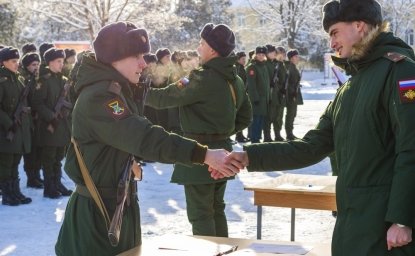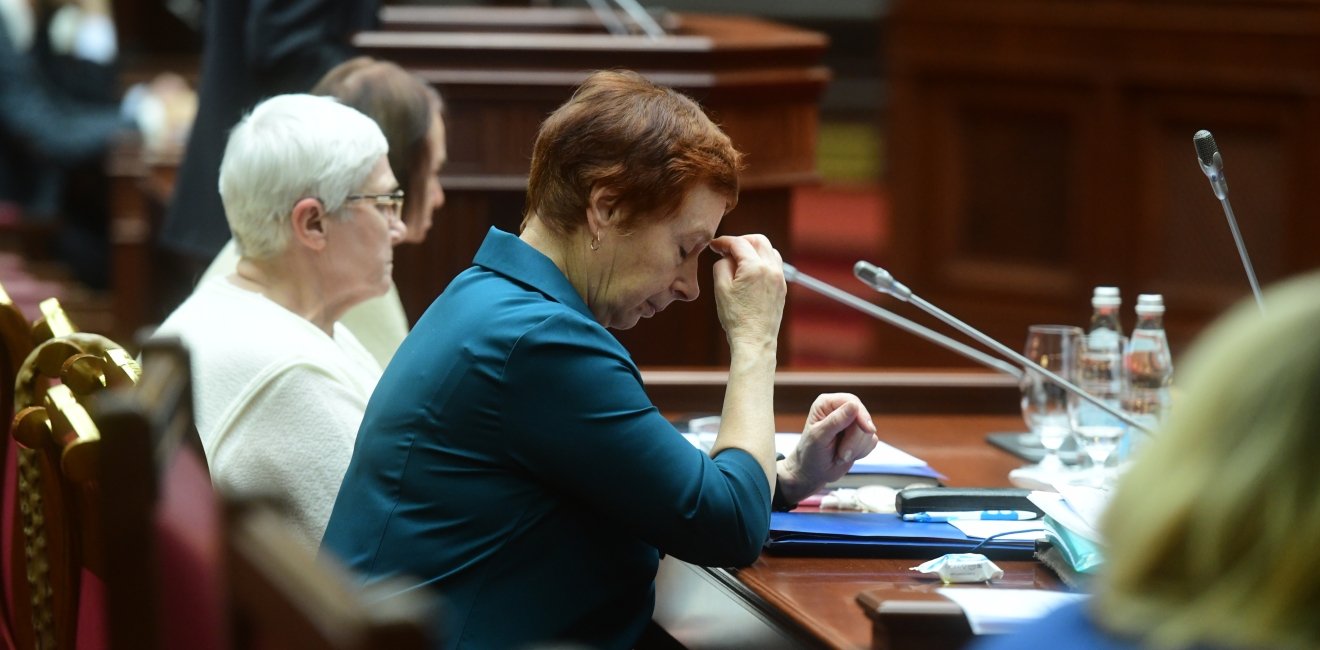
A blog of the Kennan Institute
BY GRIGORY VAYPAN
On October 22, 2019, I watched 69-year-old Alisa Meissner, my client, walk up to the podium at the main courtroom of Russia’s Constitutional Court in Saint Petersburg. An applicant, she began: “Your Honors, I was born in 1950 in Kirov region, when my mother was imprisoned at a special settlement. In 1941, she was deported from Moscow because of her ethnicity.…” She could not continue. She paused, then sobbed, apologized, and returned to her seat. After a heavy silence in the courtroom, her fellow applicants came to help and took over. Seventy-one-year-old Yelizaveta Mikhailova from the Vladimir region of Russia and 69-year-old Yevgeniya Shasheva from the Komi Republic told the court similar stories.
Born in the Gulag to parents deported from Moscow in the 1930s as part of Stalin-era persecution campaigns, Meissner, Mikhailova, Shasheva, and other children of deportees have lived their entire lives in places they never chose. These people still live in internal exile, thousands of kilometers away from their hometowns, sometimes in the very same places in the country that their families were banished to decades ago. With the Constitutional Court their last resort after years of legal challenges, they have sought to vindicate their right to return and receive compensation for lost property.
Several weeks later, the court decided in favor of the applicants, a judgment experts call “the most important and impressive event in Russian constitutional justice of 2019.” However, the final battle still lies ahead, it seems, as bureaucrats are now trying to sabotage implementation of the court’s ruling.
Deportations were part and parcel of Soviet-era repressions. When victims were sent to the Gulag camps, their homes were seized by the government. In 1991, Russia’s parliament adopted a federal law on remedies for victims of Soviet-era repressions. In particular, the law grants them the right to return to their home cities or towns and obtain social housing from the government in lieu of their lost homes. This guarantee applies to direct victims, their family members at the time of the repression, and their children born in the Gulag. However, as the law approaches its thirtieth anniversary, its promise remains largely unfulfilled. In 2005, amendments to the law shifted the financial burden from the federal level to the Russian regions and allowed the regions to impose their own terms and conditions. As a consequence, most regions introduced burdensome and often outright absurd requirements that made it impossible for victims to qualify. For example, a Moscow law requires all applicants to live in the city for at least ten years in order to become eligible for social housing. Furthermore, even assuming the victims pass all such hurdles, they are placed on a general waitlist with an average waiting time of more than thirty years. For hundreds, possibly thousands, of elderly victims, this means having an illusory right. Despite an apparent statutory entitlement, they will never be able to return home.
In 2019, for only the second time in its almost three-decades-long history, Russia’s Constitutional Court decided to take up a case brought by victims of Soviet-era repressions. In its ruling, the court declared unconstitutional the relevant provisions of both the 1991 federal law and the Moscow housing law, to the extent that they made it impossible for victims to receive the reparation they are due. The court reaffirmed the state’s obligation to compensate victims of “illegal acts” by a “totalitarian regime.” Going beyond the original commitment in the 1991 law’s preamble to provide “feasible compensation,” the court for the first time declared that the state “must strive for the greatest compensation possible.” In a rare move, the court instructed the federal government to “immediately” amend the law. It found that ensuring the return of Soviet-era deportees was the responsibility of the federal government, not regional authorities, and that federal law must comprehensively regulate the matter. At the same time, the court deferred to the lawmakers on the issue of priority, saying it was up to parliament to determine how to balance the housing needs of Soviet-era victims with those of other applicants.
A symbolic and important ruling, the judgment by the Constitutional Court broke the ice for Soviet-era deportees after many years of complete neglect. Yet the matter was not over. In April 2020, the Ministry of Construction and Housing, a federal agency assigned to implement the judgment, published its draft of the new law. In a one-page document, the ministry introduced only minor changes, ignoring most of the court’s instructions. It proposed no federal funding, made no effort to prioritize housing for repatriated Soviet-era victims, and kept in place a patchwork of regional regulations. If the draft becomes law, the judgment of the Constitutional Court will remain a dead letter. With Russia being in the midst of the coronavirus pandemic, there is now yet another pretext for bureaucrats to shy away from the state’s commitment to the victims.
The ministry’s action generated a swift response by the human rights community. Advocacy groups, such as Memorial and the Moscow Helsinki Group, have denounced the draft law, while human rights lawyers and experts have presented an alternative one. As officials have now paused to digest the critical comments and the alternative proposals, civil society is fighting to get the Constitutional Court’s judgment duly implemented.
The case brought by the Stalin-era deportees highlights Russia’s conflicted response to its Soviet past. The 1991 law acknowledged the state’s responsibility for the crimes of the communist regime and led to the rehabilitation of almost four million people. Yet, apart from this symbolic measure of satisfaction, most other remedies under the law remained negligible or, as with the return of deportees, effectively unavailable, even as the country moved from the economic difficulties of the early 1990s to the relatively prosperous 2000s. Over time, the focus of official policy has shifted from reparation to memory (though even the latter has now come under increasing attack). Against this background, the case of Stalin-era deportees is significant to the extent that it has brought the reparation aspect back to the forefront. For many, the case was an eye-opener. Unsettling the predominant perception of Soviet-era repressions as a relic of the past, it revealed the astonishing fact that many victims of the Soviet regime continue to live in internal exile to the present day. For them, the repressions have never ended. Suddenly, something could still be done to restore justice for the few survivors.
Apart from the specific context of transitional justice, the case also demonstrates the potential and the limitations of constitutional justice in today’s Russia. The Constitutional Court has turned out to be the only court in the country that has backed the claims of the applicants. The court’s formal mandate and its place in an informal institutional hierarchy allow it to enforce constitutional rights and strike down restrictive laws and practices in certain cases where other courts or agencies are unable or unwilling to do so. At the same time, the court is often too deferential to other branches of government. As in the case at hand, the court’s judgment might give momentum to a campaign, yet its ultimate success would almost always depend on a civic effort to secure compliance with the court’s ruling. In a difficult political environment, Russian civil society is learning to litigate strategic cases and to mobilize the law in order to protect the most vulnerable.
The opinions expressed in this article are those solely of the author and do not reflect the views of the Kennan Institute.
Author

Senior Lawyer, Memorial

Kennan Institute
The Kennan Institute is the premier US center for advanced research on Eurasia and the oldest and largest regional program at the Woodrow Wilson International Center for Scholars. The Kennan Institute is committed to improving American understanding of Russia, Ukraine, Central Asia, the South Caucasus, and the surrounding region though research and exchange. Read more

Explore More in The Russia File
Browse The Russia File
In Search of Russia’s Digital Trace in Romania’s Political Crisis

With Syria’s Collapse Russia’s Regional Power Play Disintegrates

Putin's Strategy Tests Europe's Defense Limits

